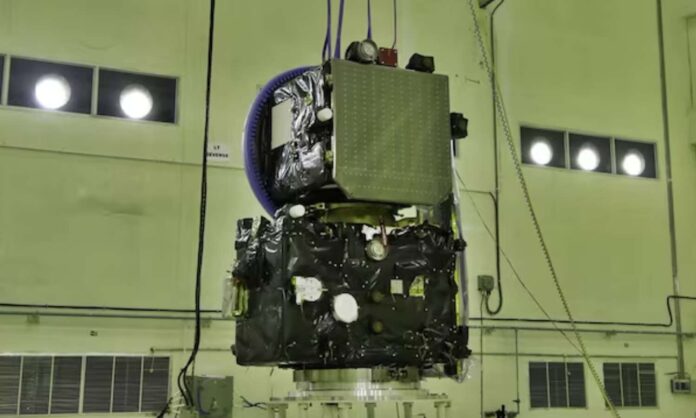The European Space Agency’s (ESA) ambitious Proba-3 mission has reached a significant milestone as the Coronagraph spacecraft has been successfully fueled with hydrazine. This critical operation took place at ISRO’s Satish Dhawan Space Centre in India, ensuring the spacecraft is ready for its scheduled launch aboard ISRO’s PSLV-XL rocket on December 4, 2024.
Proba-3 is no ordinary space mission. It aims to pioneer precision formation flying with two satellites operating in tandem to simulate a single instrument. This revolutionary mission is set to provide groundbreaking insights into the Sun’s corona, using advanced techniques to create an artificial eclipse.

The Role Of ISRO And The Fueling Process
The fueling process is a critical pre-launch procedure. Engineers from ArianeGroup, adhering to stringent safety protocols, successfully filled the spacecraft with hydrazine, a highly toxic but efficient propellant. To ensure safety, the engineers donned SCAPE (Self-Contained Atmospheric Protective Ensemble) suits, designed for handling hazardous materials.
This step is crucial for Proba-3’s complex space maneuvers, as the hydrazine fuel will power the two satellites, enabling them to maintain precise alignment in orbit.
The Science Behind Proba-3
The Proba-3 mission will consist of two small satellites that will work together to create a 144-meter-long solar coronagraph. The first satellite will act as an occulting disk to block the Sun’s intense light, while the second satellite, equipped with observation instruments, will capture the resulting artificial eclipse.
This innovative design will allow scientists to observe the Sun’s corona, a faint outer layer of plasma, without the usual interference from the Sun’s brightness. Key areas of focus include studying solar flares and coronal mass ejections (CMEs), both of which can have significant impacts on space weather and Earth’s technological infrastructure.

Precision Formation Flying: A Technological Breakthrough
Proba-3’s success hinges on its precision formation flying technology, a feat never before demonstrated on such a scale. The satellites must maintain an exact distance and orientation to achieve the desired alignment, which will test the limits of current aerospace engineering.
This capability could pave the way for future multi-satellite missions, enabling complex scientific tasks to be performed more efficiently and cost-effectively.
Implications For Space Weather Research
Understanding solar activity is critical for mitigating the effects of space weather, which can disrupt satellites, communication systems, and power grids on Earth. Proba-3’s data will enhance our ability to forecast space weather events, providing crucial protection for civilian and military satellites.
By capturing high-resolution data on solar phenomena, Proba-3 will improve our understanding of the Sun’s behavior, enabling more accurate predictions of solar storms and their potential impacts.
International Collaboration At Its Best
Proba-3 is a testament to the power of international collaboration in space exploration. The mission is a joint effort, with significant contributions from ESA member states and ISRO, showcasing the synergy between European and Indian space agencies.
Such partnerships not only advance scientific discovery but also foster global cooperation, setting a precedent for future collaborative missions.
Revolutionizing Space Observation
The Proba-3 mission marks a turning point in how space research is conducted. By using smaller, more agile satellites, ESA is demonstrating that complex scientific objectives can be achieved without relying on massive, costly spacecraft.
This approach could revolutionize space exploration, making it more accessible and sustainable. The insights gained from Proba-3 will not only enhance solar research but also provide a blueprint for designing future multi-satellite missions.
What’s Next For Proba-3?
With the successful fueling milestone achieved, Proba-3 is on track for its December launch. As the countdown begins, scientists and engineers are eagerly anticipating the mission’s contributions to solar science and space weather research.
Proba-3 promises to be a game-changer, offering groundbreaking insights into solar dynamics and setting a new standard for precision formation flying. This mission not only pushes the boundaries of technology but also highlights the potential of international partnerships in advancing humanity’s understanding of the cosmos.

